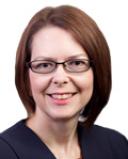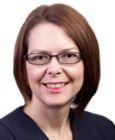Health
Empirical Perspectives on Prayer for Healing
Viewing prayer through multiple cameras produces a more complete picture.
Posted April 10, 2012
In previous posts, I’ve noted problems with how most research on prayer for healing has been conducted. Researchers have attempted to design double-blinded, controlled trials of distant intercessory prayer. Intercessors are typically given the first name and condition of someone they do not know and told to pray for a complication-free recovery. Researchers base conclusions on the efficacy of prayer solely on whether subjects in the experimental group exhibit better health than those in the control group. Such studies have certain advantages: by ruling out potential confounds such as the well-known placebo effect. But studies have been designed in such a way as to compromise both construct validity and ecological validity; in other words, it has proven difficult to isolate the intended phenomenon and to study it as it naturally occurs. It is problematic that researchers have assumed the equivalence of widely divergent prayer practices and required people to pray very differently than they are accustomed to doing.
I have proposed shifting attention toward the study of proximal intercessory prayer, or PIP. This is because when many people pray for healing, they often get up close to someone they know, touch the person, and empathize with their sufferings. This kind of prayer practice is not well suited to double-blinded trials, which means that particular care is required to avoid confusion from potential confounds such as known placebo effects. However, this does not mean that such research must be uncontrolled. It is possible, for example, to compare results for PIP with those of other interventions such as hypnosis and suggestion, and to conduct replication studies with different subject populations.
My larger point is that conducting prospective clinical trials is important, but this is but one method for studying the effects of PIP. Allow me to draw a modern analogy to explain my approach.
The Hubble Space Telescope takes revealing pictures by using several different types of cameras. I approach the study of PIP from multiple vantage points: each one suited to answering a particular question about prayer for healing. Each method is like a different type of camera, offering complementary perspectives on how prayer affects health.
Camera 1: Medical records: Are healing claims documented?
Comparison of medical records from before and after prayer provides a check on whether people claiming healing exhibited improvements for which there is no obvious explanation. For example, in the course of my research, I met Daisy, who had worn hearing aids for thirty years. She had a progressively worsening, hereditary inner-ear problem. In 1999, tests showed moderate hearing loss; by 2004, Daisy’s hearing loss was moderately severe to severe. In 2008, Daisy received PIP and “felt my fingers on fire and the warmth of the Holy Spirit inside of me,” after which she could hear without hearing aids. She had her hearing retested two weeks later, showing normal thresholds in lower frequencies with moderate loss in higher frequencies. A 2010 screening still showed normal hearing in speech frequencies. Medical records do not prove that “God” healed Daisy through prayer, but do confirm Daisy’s claim of improved hearing.
I also came across Frank, who claimed improved vision after prayer. He produced an optometrist’s note stating that “On 02” his left eye uncorrected visual acuity was “20/200”; in 2007, it was “NOW 20/40.” I followed up with Frank’s optometrist, who revealed that the record had been “altered.” The phrases “On 02” and “Now 20/40” had been added. The unaltered record shows visual acuity of 20/200 in 2007, after Frank’s supposed healing. Such cases of apparent fraud do not seem to be common, but medical records are one way of sifting out which claims are less credible.
Camera 2: Surveys: How do sufferers perceive healing prayer?
Surveys shed light on how supplicants perceive sickness, prayer, and healing. In one set of surveys I carried out, 72 percent of respondents had a current need for healing; the most common complaint was pain. 52 percent reported healing. Few “claimed healing by faith,” instead defining healing as noticeable improvement of symptoms. Those who self-reported high faith were no more likely to experience healing than those who admitted weak faith. Most received multiple prayers for the same problem, noting progressive improvements with each prayer. Most also went to doctors, viewing prayer and medicine as complementary.
Camera 3: Clinical Trials: Can health outcomes of prayer be measured?
Clinical trials can show whether PIP results in measurable changes in health markers. In a prospective study of hearing and vision in Mozambique, I found highly significant improvements in hearing and statistically significant improvements in vision following PIP. Out of 11 hearing subjects, two had thresholds reduced by over 50 dBHL. One subject, Jordan, was presented as deaf and mute since birth and made no responses to sounds at 100 dBHL; after PIP, he responded to 60 dBHL tones, imitating sounds in a hoarse, raspy voice. Out of 11 vision subjects, three improved from 20/400 or worse to 20/80 or better. Before prayer, Maryam could not count fingers from one foot away; after one minute of PIP, she was reading the 20/125 line on a vision chart.
Camera 4: Follow-up: Do healing experiences produce lasting effects?
Multi-year observations and interviews assess whether changes are temporary or enduring. Many informants—such as George, who reported healing from an untreatable brain tumor through prayer alone—claimed they were still healed as many as eight years later. George and others had subsequently prayed for others who in turn reported healing, and this new cohort prayed for still others, sometimes traveling to other countries to do so. Such ripple effects of healing prayer largely account for the wildfire spread of global pentecostalism.
Bringing these four cameras into focus produces a more complete picture of how prayer affects health than using any single study method.
Copyright Candy Gunther Brown 2012.


